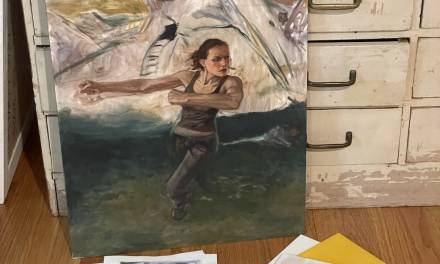 |
| When the best foreseeable outcome is simply surviving… |
client to be the level headed voice of reason when a job takes a wrong
turn. Hopefully the client will recognize
the problem and do their best to keep things moving forward, but you need to do
your part as well. Often the problems
may arise because some clients are not very good communicators to begin with,
in which case you are going to be doing the heavy lifting to reach
a result where everyone is happy. A job which
has derailed is a painful experience that is bound to happen from time to time. Here are some questions to ask yourself and
truths to remember that will help you get though those bad times:
job.
2. Ask yourself: “What aspects of this are my
fault?”
is one of the most critical areas to look at as honestly as possible before you
can correct the situation. Put aside all
the grievances which you have with the problematic client and simply ask
yourself: “have I done what I aimed to do?
Have I done what I was asked to do?
Have I executed this job to my quality standards?”
responsibility in a job gone south, though some times it is heavily weighted to
one side. If you step back and see that,
indeed, you have short changed the job in some respect, you need to own up to
that in your own mind so that you can make it right. The degree to which you bear responsibility
should reflect in the extra effort you are willing to put forward to correct
the problem.
3. Identify the unresolved problems(s)
vague problem. Good art directors
clearly communicate the problem itself.
A good art director respects the expertise of their artists to find
appropriate and interesting solutions to their problems, so they don’t really need
to do anything other than make you aware of what those problems are. If we are holding up our end, we must be
worthy of that trust. Good art directors
know that an illustrator is not just a pair of hands, but a creative individual
who is trained in solving visual problems.
way, it becomes our responsibility to extract the true nature of the problem so
that we can solve it correctly. Even if
we still follow their dictated solution, we can do it much more effectively if
we understand *why* we are doing it. I’ve
found that I often come up with better, simpler, or more elegant solutions when
I understand why I’m being asked to do something and hopefully the art director
will be receptive to this. When an
artist can propose their own solution, it almost always better fits to their
strengths and will give a better outcome.
Working blindly off of client dictated instruction is more or less just
groping around in the dark and often it does not fully satisfy the concern. It is an inefficient way to solve a problem
at best, so try whenever possible to get more relevant information.
make changes which you don’t agree with.
Usually this feeling of sabotage indicates that you have not yet
understood the unresolved problems or the art director does not trust/agree
with your opinion on a better solution.
Of course the client wants for the image to succeed, that is why they
are paying you to make it. You don’t
have to like the feedback, but it is always ALWAYS worth reminding yourself on
a job in trouble: we are all on the same team.
categories. The first are the result of
poor communication. Assuming that YOUR
communication has been good (has it?), you can still end up dealing with a
client who gave specific information and now they are contracting
themselves. The client wants aspects of
a final changed which were present in the approved sketch. The client gives very minimal briefs and then
incredibly nitpicky feedback on the final.
The client asks for a change and then says “oh wait, I meant I want you to
do the opposite of what I asked you to do” (true story). This is frustrating for obvious reasons and
these are the sort of time wasting situations that are typically justified in
seeking additional fees for additional work.
When a client with poor communication has to start paying extra for
their own mistakes, they generally figure out what they want a whole lot
quicker. I expect some fine-tuning with
most any job, but not heavy reworking after approvals.
picked the wrong artist. That sucks,
because that artist is you. When it
becomes clear that this has happened, your only choices are to walk or to try
and navigate through to the other side.
Often the mismatch can be subtle and not fully mature until late in the
process. After all, if I am so obviously not the right choice, I
probably would not have accepted the job at all. The painful part of this is
that the client just doesn’t understand why you are not giving them what they
expected and you can’t understand why the client does not like what you are
giving them. It is very easy to take it
personal.As professional illustrators, we like to believe that we should be able to
handle anything. Any subject, any tone,
any problem. While that should be true
overall, the reality is that we are *best* at being ourselves and working
towards the solutions which we find exciting and interesting. If, for example, you are bored with
conventional fantasy tropes and want to explore strange or unexpected takes on
the fantasy genre, you are in for hard times if your client is producing a
product rigidly set in a classic traditional fantasy universe. If you are pushing your work to a stylized and
graphic direction and the client wants highly rendered hyper-realism… problems.
as to what you do and what the client wants is one of the most frustrating
conclusions for an artist to reach. This
is a case where you probably can not make yourself and the client both
happy. But it isn’t personal. It does not reflect on your skill, ability,
or value as an artist. It only reflects
on your appropriateness to that job or client.
Walk or see it through to meet the client’s needs, those are your
choices, but don’t take it personally.
is that you never have to work with someone if you don’t want to. One of the greatest pleasures (and I’ve only
had this pleasure once but it. was. sweet.)
is telling a formerly abusive client that you are busy now and will be busy
indefinitely, thankyou for your interest.
On the rare occasions which I find myself pushed to this point, it is a
comfort to remind myself that ultimately I can put this person in my past and
never deal with them on a professional level again.
low the rate was, no matter how much you dislike the art director, you are a
professional and every job is a building block in the ever growing structure of
your career. If you let your emotions
get the best of you and refuse to deliver your best because you don’t like an
assignment or client, you are only hurting yourself. If possible, make every piece into something
you would be proud to show in your portfolio.
If the job is forced in a direction where that is not going to happen,
you can still conduct yourself as a professional who does their best to get the
job done right. That is something worth
taking pride in and any opportunity to prove it is at least worth that
much. Sometimes jobs go wrong, but these
experiences teach us better who we are and who we want to be.






Good timing, Mr. Palumbo…I needed to read this post today — thanks!
Matur suwun wis di ijinke koment 🙂
jersey sepak bola
jersey bola grade original
jersey bola grade ori
jual jersey bola
baju bola original
jersey bola grade ori
Thank you! Good advice to read on a day like today is!!
Almost giving every good aspect which is said to be of utmost importance and one had to comply every good cause for it, so indeed there are the best probable thoughts given. resume trends